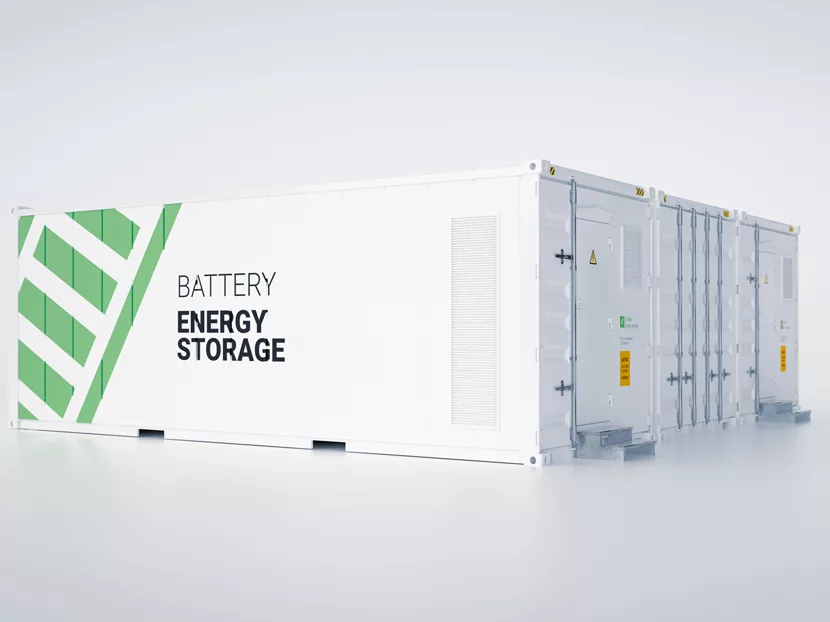In the United States, an estimated 5 percent of the electricity transmitted and distributed is lost, says the Energy Information Administration (https://bit.ly/2DLRJOb). This is separate from the energy wasted on either end of the wires from a power plant to your home. A great way to reduce loss is to generate and store electrons closer to our homes.
Although lithium-ion batteries are the popular choice for most things we work with, what other strategies could we use to store meaningful power in a house?
For a background on batteries, here is what a Slate article described as the ideal battery (https://bit.ly/31Hq1Kn): “It would put a lot of energy in a small space; it would be inexpensive; it would lose in transfer less than a fifth of the energy put into storage and taken back out; it would last decades; and it would release the energy quickly. The optimal energy storage technology would also be safe to transport and nontoxic to dispose of, as well as made of raw materials that can be obtained without causing major environmental damage.”
Arguably, anything that stores a lot of power in a small space has the potential to do damage if discharged improperly. However, the medium used for storage can vary in availability and environmental impact. Lithium mining is taking a toll on the environment, notes an article in Wired magazine (https://bit.ly/3kzX0Jd). The pollution of unearthing the metals and high water usage associated with the process are two downsides.
“It’s a relatively cheap and effective process, but it uses a lot of water — approximately 500,000 gallons/ton of lithium,” states the article. “In Chile’s Salar de Atacama, mining activities consumed 65 percent of the region’s water. That is having a big impact on local farmers.”
Additionally, the article details some of the issues they have had near Tibet from toxic process chemicals that have infiltrated their water supplies, killing fish and farm animals.
UK liquid air battery
I’m typing on a device with a lithium-ion battery, surrounded by other devices with the same technology. However, maybe there are better technologies for nonportable devices that could help a home. What readily available materials could be used as storage, instead of the typical metal ions?
Water can be used to store energy in pumped hydroelectric dams, but these are geographically limited. If there is a narrow canyon well above a lake or river nearby, pumped hydro may be an option. This is not a topographic map detail common enough to help major populated areas.
Air could be a suitable medium for storage. It is available everywhere, doesn’t need to be mined or transported, and isn’t toxic like metal and chemical batteries. There are also no significant issues with releasing clean air back into the atmosphere.
Air is a gas unless you squeeze it hard enough; then it becomes a liquid. An article in UK newspaper The Guardian describes a project in the UK by a company called Highview Power, which is developing the world’s largest liquid air battery (https://bit.ly/2DUBVbH).
The system will “use spare green energy to compress air into a liquid and store it. When demand is higher, the liquid air is released back into a gas, powering a turbine that puts the green energy back into the grid,” according to the article.
This battery will store “250 MWh of energy, almost double the amount stored by the biggest chemical battery, built by Tesla in South Australia,” the article notes.
In a more complex refrigeration cycle, excess thermal heat and chilled water is a byproduct of the process, which can be stored and used nearby.
The process used by Highview Power is called the Claude Cycle. Science Direct, a peer-reviewed website covering scientific and medical research, details the process in an article: “Air has been recently regarded as a Cryogenic Energy Storage medium, whereby air is liquefied at around minus 195 C and stored in insulated tanks.” For best results, “At off-peak times, energy produced by renewable sources is fed to an air liquefaction unit, while, when electrical energy is needed, the liquid air could be pumped, heated and expanded into turbines to generate power.
The Science Direct report adds that the liquid air technology is considered “compact” because the footprint of the storage tanks is not as large as something like a pumped hydro storage dam. There are additional benefits in close proximity to these plants because the cool temperatures produced from the liquidation process can be a good fit for refrigeration or food processing plants. With temperatures to spare around minus 120 C, these plants could be great neighbors for a meatpacking plant, for example.
Assuming the liquid air storage technology works well, could it be scaled down to work for residential purposes? Similar to how a geo-exchange system would work for water/water battery storage of thermal energy, maybe the house of the future would have a small-scale version of this technology buried under the home.
However, I’m not sure how safely you could store liquid oxygen in a residence. I’m sure you wouldn’t want to accidentally put a pickaxe into that much potential energy.
I hope some private company comes up with an incredible battery to revolutionize how we store electricity or thermal energy. We desperately need better storage to avoid the on-demand way we now consume energy.
Ideally, the material used for storage will have minimal environmental baggage. Lithium and other chemical batteries are the trends, but some diversity in storage materials could help take some stress off-peak electrical grid moments, which would benefit the whole power sector and consumers.






